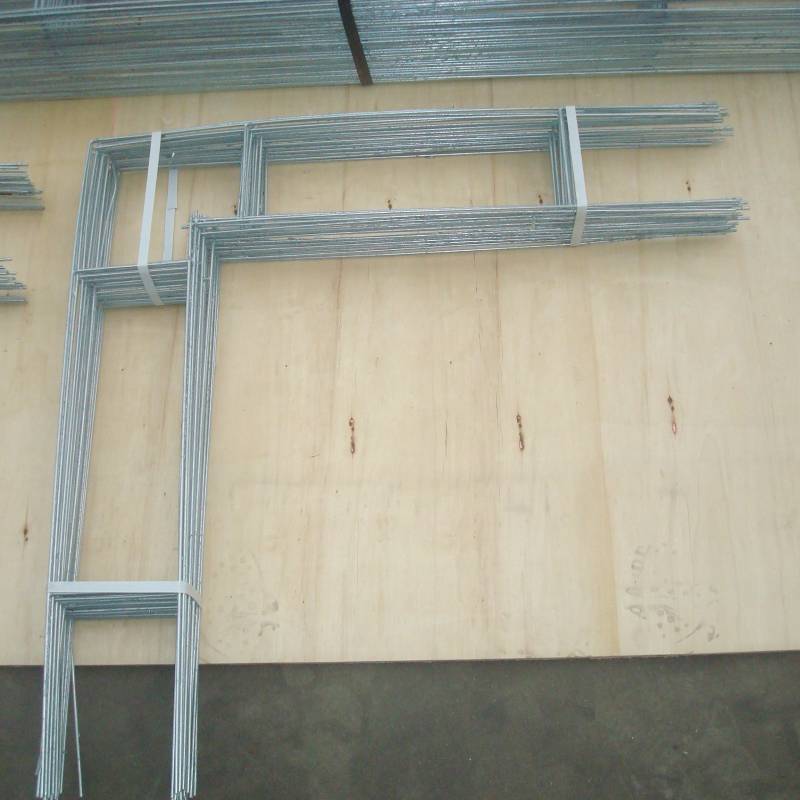
- Mobile Phone
- +8613931874955
- sales@cntcmetal.com
types of cavity wall ties
Understanding the Types of Cavity Wall Ties
Cavity walls have become an integral part of modern construction, offering enhanced thermal insulation, moisture control, and structural stability. They consist of two parallel walls, separated by a gap or cavity, which minimizes the risk of water ingress while providing better energy efficiency. One crucial element in the construction of cavity walls is the wall tie. Wall ties serve as connectors that hold the two walls together, ensuring structural integrity while allowing for flexibility and movement due to temperature changes. This article will explore the various types of cavity wall ties, their materials, and their importance in building construction.
1. Types of Wall Ties
Cavity wall ties are categorized mainly by their material and design
. The most common types includea. Stainless Steel Ties Stainless steel wall ties are popular due to their durability and resistance to corrosion. They are especially suitable for areas prone to dampness or where the wall may be subject to moisture. Stainless steel ties come in different grades, with Grade 304 and 316 being the most commonly used. Grade 316 provides extra protection in highly corrosive environments, such as coastal areas.
b. Galvanized Steel Ties Galvanized steel wall ties are coated with a layer of zinc to prevent rusting. These ties are less expensive than stainless steel but offer a moderate level of corrosion resistance. They are typically used in less aggressive environments where moisture exposure is limited.
c. Plastic Ties Plastic wall ties, made from materials such as polypropylene, are an alternative to metal ties. They are lightweight, resistant to corrosion, and provide great thermal performance. However, plastic ties can be subject to degradation over time, particularly when exposed to UV light or extreme temperatures.
d. Composite Ties Composite ties combine the benefits of plastic and metal to provide both strength and insulation properties. They are manufactured using a mix of materials, which helps to reduce thermal bridging, making them suitable for energy-efficient buildings. These ties are particularly useful in energy-conscious designs where minimizing heat loss is a priority.
2. Design and Functionality
types of cavity wall ties

The design of wall ties plays a significant role in their ability to function efficiently. Ties must be strong enough to support the weight of the outer wall while allowing for some movement between the two leaves of the cavity wall. Various designs include
a. Vertical Ties Vertical wall ties are designed to run perpendicular to the cavity, providing primary support and stability between the walls. They help distribute the load evenly and prevent buckling under pressure.
b. Horizontal Ties Horizontal ties can also be employed to provide additional stability, especially in taller structures. They provide reinforcement against lateral forces and help maintain the alignment of the cavity walls.
c. Swaged Ties Swaged wall ties feature a distinct construction with a bulge or “swage” along their length. This design enhances the tie’s mechanical interlock with the masonry, offering improved resistance to shear forces.
3. Importance in Construction
The selection of appropriate wall ties is crucial for maintaining structural integrity and moisture control in cavity wall construction. The ties must be installed at regular intervals and in accordance with building regulations to ensure the wall operates effectively. Poorly chosen or incorrectly installed wall ties can lead to serious structural issues such as wall bowing, moisture penetration, and even failure of the building.
Conclusion
Wall ties play a vital role in the effectiveness and durability of cavity wall systems. Understanding the various types of wall ties and their applications can significantly impact construction quality and long-term performance. Whether opting for stainless steel, galvanized steel, plastic, or composite ties, ensuring the appropriate selection and installation is key to a successful cavity wall construction. As building standards continue to evolve, so do the materials and designs available, making informed choices more critical than ever.
share:
-
Why Sacrificial Formwork Is Redefining Underground ConstructionNewsJun.06,2025
-
The Structural Dynamics of Modern Concrete: How Snake Spacers Revolutionize Flexible ReinforcementNewsJun.06,2025
-
Snake Spacers Smart-Lock Concrete Reinforcement with Surgical PrecisionNewsJun.06,2025
-
Snake Spacers: Reinforcement Precision for Modern Concrete ProjectsNewsJun.06,2025
-
Snake Spacers Powering Concrete's Structural DNANewsJun.06,2025
-
Slither into Success: Snake Spacers' Precision Bite for Unbreakable ReinforcementNewsJun.06,2025
-
Sacrificial Formwork: Building Stronger, Faster, and Safer StructuresNewsJun.06,2025



















